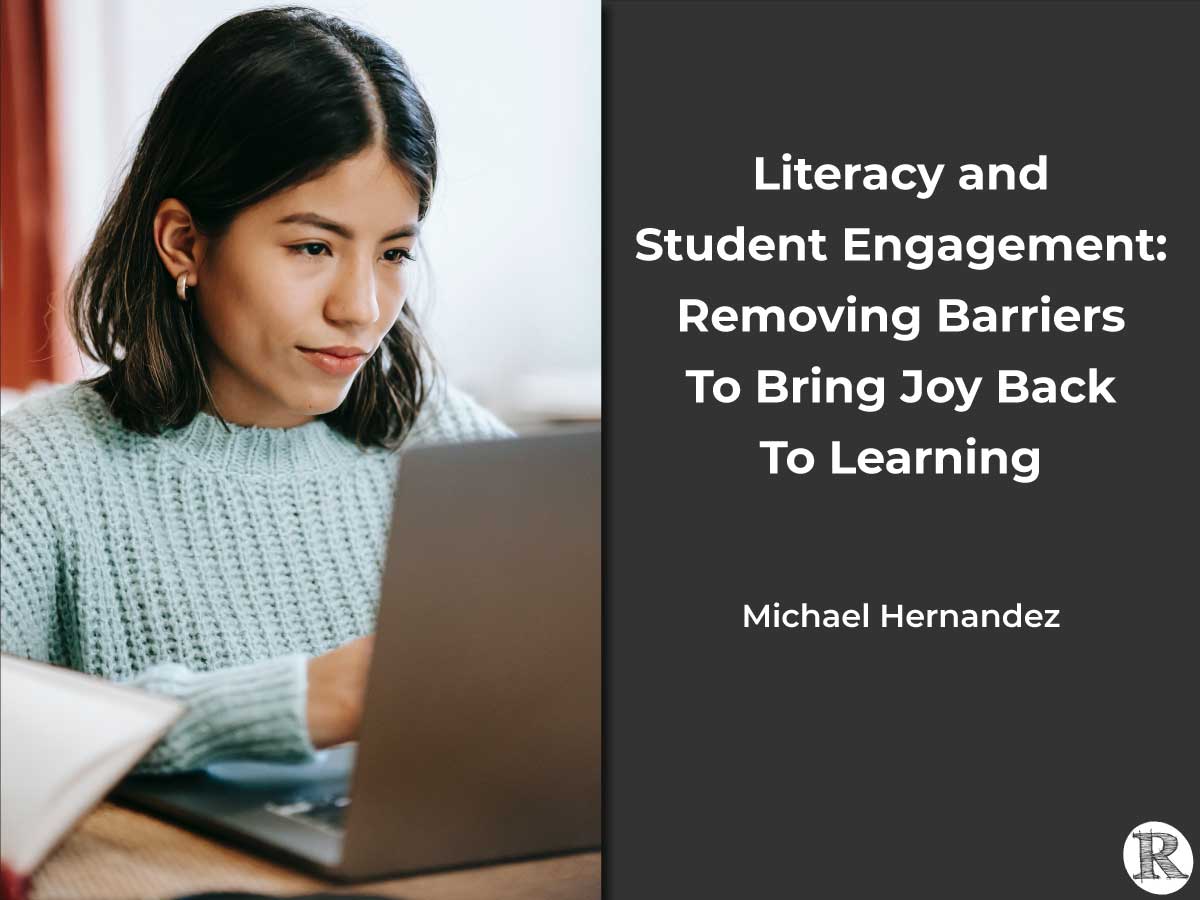Literacy and Student Engagement: Removing Barriers To Bring Joy Back To Learning
Michael Hernandez
As a student, I hated reading. I was–and still am–slow at it, and every story, textbook and essay I had to read was a struggle that took much longer than it did for my peers. Even though I was curious and liked to learn, reading–and the grades that came from reading assignments–were discouraging, and impacted my love of learning. Rather than being a joyful experience that made me hungry to learn more, reading became an unwelcome chore, and a barrier to becoming a lifelong learner.
Many students come to reading with similar struggles, and when 85% of school curriculum is based on reading, it can be a major obstacle to student engagement and success. As discussed in a Readability Matters’ whitepaper Reading Needs Its Next Gutenberg Press, a child’s reading ability is a key indicator of academic progress, as well as their social emotional wellness, motivation, and engagement.
A Gallup poll tracked a steady decline in student engagement, going from 74% in 5th grade to 34% in 12th grade, raising the question of how to best solve the engagement slide to boost student learning and future success.
There are many potential reasons for this slide, including increased academic demands, biological changes in students, and social and economic pressures. It’s up to educators to reverse the engagement slide, and remove any barriers to learning that we can so that students can focus on using ideas and skills in our curriculum rather than fighting to simply understand information. There are many strategies educators can use to turn this around, including challenge-based or project-based learning. This type of learning experience has been embraced by many educators to engage students because it allows room for student choice and ownership of learning, while providing purposeful experiences that connect with students’ lives.
This type of curriculum relies heavily on reading, where students conduct research, collaborate with peers, report their findings, and reflect on their learning. In each of these activities, having a positive relationship with text removes barriers to success, specifically in terms of comprehension. Research has found that reading comprehension is greatly impacted by a variety of factors, including font style and size, line spacing, and character spacing, and also that these settings are unique to the reader–what works for one student may not work for the next.
Unlike printed materials, digital texts–websites, PDFs, ebooks, etc.–have the potential to be customized by the user. Now that many schools use digital texts, there is a new opportunity for content providers to add text personalization features to elevate student literacy and engagement.
This is especially true for challenge-based learning experiences that require students to conduct research unique to their specific project, often from digital sources, beyond textbooks or other one-format-fits-all school-selected texts. That means that if educators want to leverage enhanced literacy rates from customizable digital texts on every conceivable resource, it would require a systemic change, and the adoption of a universal standard for digital text publishers and platforms.
Some tech companies are already at work on such a solution. Adobe has integrated customization features for text into their PDF reader, Acrobat, with a feature called Liquid Mode. But a universal standard has yet to be adopted by EPUB or HTML standards committees.
Helping our students become lifelong learners and engaged citizens begins with making learning enjoyable and meaningful. Using customizable digital texts helps students focus on the excitement and the joy of learning, rather than the struggle of reading.
 About Michael Hernandez Michael is an award-winning teacher, author and consultant. He is an Apple Distinguished Educator and Lindblad Expeditions/National Geographic Grosvenor Teacher Fellow. Follow him on Twitter at @cinehead and at www.michael-hernandez.net
About Michael Hernandez Michael is an award-winning teacher, author and consultant. He is an Apple Distinguished Educator and Lindblad Expeditions/National Geographic Grosvenor Teacher Fellow. Follow him on Twitter at @cinehead and at www.michael-hernandez.net




